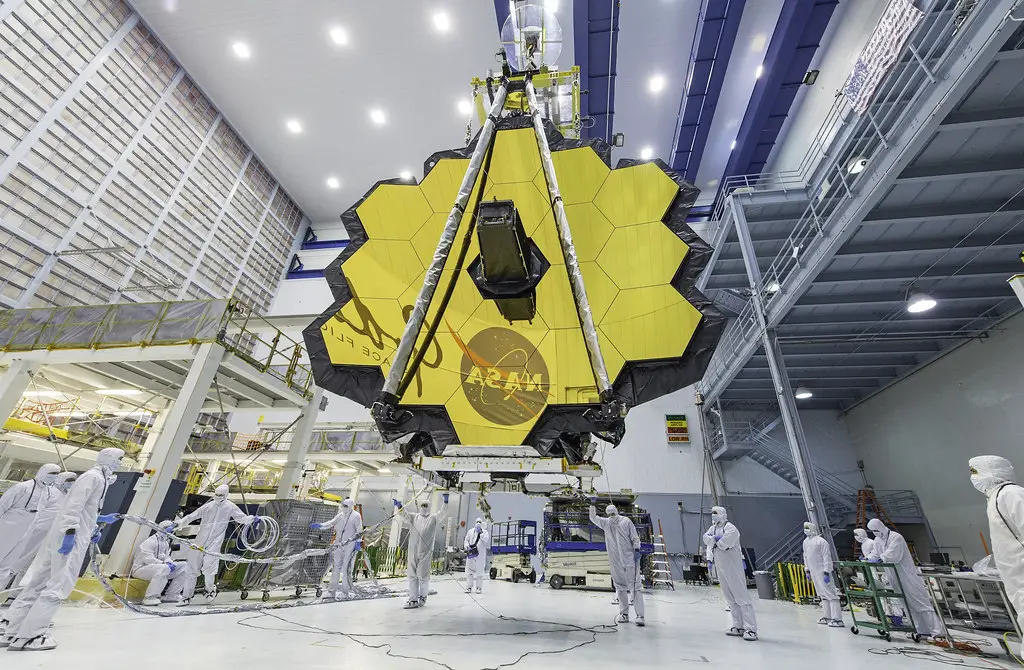The James Webb Telescope, scheduled to launch in 2018, is already one of the most complex scientific instruments ever constructed by man, and it will need to capture thousands of images of some of the most distant phenomena in our universe before its mission ends in 2028. In order to get these images, scientists must carefully ensure that every single component on the telescope works exactly as it should. This includes the mirrors, which are made out of beryllium, an extremely fragile substance that must be treated with special care during production. Let’s take a look at how many james webb telescope images and how it is made!
Early History of the James Webb Space Telescope
Webb was originally conceived in 1996 as a joint project between the European Space Agency (ESA) and NASA. However, due to NASA budget cuts, they pulled out of the project in 2011. This lead to ESA giving it a go on their own. Construction of the telescope began in 2014 with an expected launch date of October 2018. At this time, it is unclear what will happen if there are any delays or setbacks. The telescope will have a 6.5 meter diameter primary mirror that is segmented into 18 hexagonal-shaped sections. The segments will be folded up during its ride into orbit around Earth. They’ll unfold once in space to create one large mirror with a collecting area six times larger than that of Hubble’s main mirror. The mirror itself is made from beryllium and coated with gold for maximum reflectivity. The construction process has been slow but steady, the last piece being installed just last week. Engineers now need to connect the various components together before testing can start.
Instrument Development for JWST
The James Webb Telescope is an astronomical observatory in space, with a primary mirror that has a diameter of 6.5 meters. The telescope is planned to be the successor to the Hubble Space Telescope, as well as to provide more robust follow-up capabilities for discoveries from missions like Planck, Herschel, Spitzer, WISE and many others. JWST will offer resolutions up to 100 times sharper than Hubble; its observations are not limited by what can be seen through Earth’s atmosphere. On top of this, JWST will study every phase in the history of our Universe, ranging from the first luminous glows after the Big Bang to studies of exoplanets and their atmospheres. Scientists hope to use it to answer fundamental questions about our Universe including how stars and galaxies formed and evolved together over cosmic time. Alongside studying light, JWST also has instruments that measure very long wavelength emissions such as heat. For example, one instrument called NICMOS works at near-infrared wavelengths to detect dust heated by newly forming stars or supermassive black holes feeding on nearby gas and dust.
Operation and Mission Phases
-Phase A: Development of the telescope’s design (2007-2010)
-Phase B: Testing and evaluating the design, including structural tests (2011-2013)
-Phase C: Integration of all parts of the observatory and completion of ground testing at NASA Goddard Space Flight Center in Greenbelt, Maryland (2014)
-Phase D to F; Launch, deployment, checkout, activation, alignment, calibration and commissioning (2015–2020) Science mission phase (2021+).
Throughout the following phases, preparations will be made for Webb’s planned launch in October 2018. The science mission phase will start once it reaches its orbit 1 million miles from Earth.
Cost
NASA’s James Webb Space Telescope is going to be the most powerful telescope in the world. The telescope can see farther into space than any other telescope, including NASA’s Hubble Space Telescope. To do this, it collects infrared light instead of visible light like Hubble does. The telescope will have a 6.5-meter diameter primary mirror that will collect infrared light from very faint objects in space. Once collected, the images are sent back to Earth via an 18-meter long thermal blanket (insulated cable). Once on Earth, scientists use supercomputers at NASA’s Jet Propulsion Laboratory in Pasadena, California. These computers reconstruct the images so they can be seen by humans. There are many pictures taken by the James Webb Space Telescope. When it launches, about 10 percent of its time will be spent taking pictures. But eventually, with enough data collected over time, more than 90 percent of its time could be spent taking pictures! The camera system for the James Webb Space Telescope was developed by Ball Aerospace & Technologies Corp. in Boulder, Colorado and Huntsville, Alabama. They provided cameras for Hubble as well as Cassini (a space probe orbiting Saturn), Galileo (a space probe orbiting Jupiter), and New Horizons (the first spacecraft to fly past Pluto).
Timeline
-Webb will be the world’s most powerful telescope when it is operational in 2019.
-It can detect light from some of the earliest stars to form in the Universe up to 13 billion years ago.
-When fully operational, Webb will have six mirrors—three times as many as any space telescope that has come before.
-Webb will see farther than any other telescope, providing images of the first galaxies ever formed and insights into how our Universe became what it is today. -Webb is a joint project between NASA, the European Space Agency (ESA), and the Canadian Space Agency (CSA).
-In order for this mission to succeed, engineers had to create a state-of-the-art observatory with unprecedented levels of thermal stability. -Engineers are using cutting-edge technology such as gold coating and low thermal expansion glass to ensure that the instrument stays at a constant temperature.
-The final mirror must not warp more than 7/1000ths of an inch or change its shape by more than 50 nanometers during full operation because even tiny changes in shape would affect how precisely we can measure incoming infrared light from deep space.
![]()
